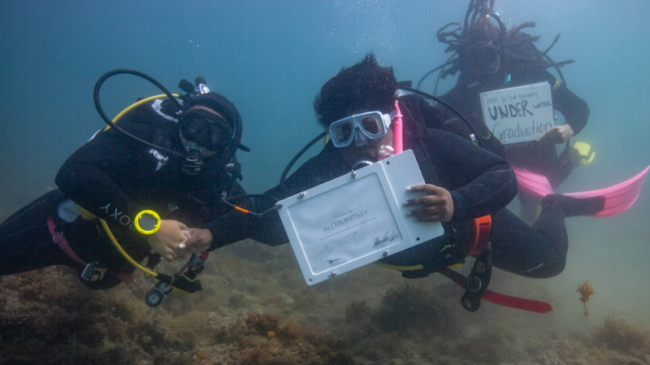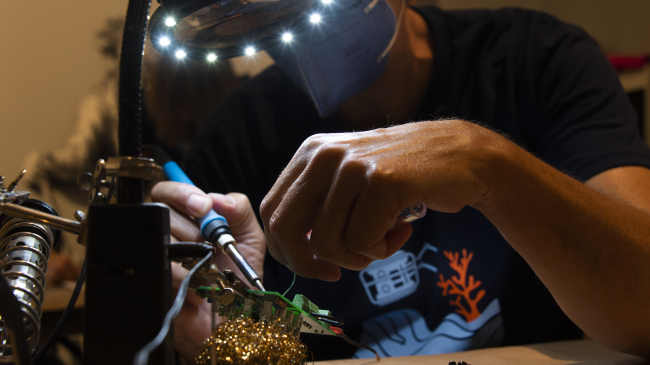Read all
More stories in Goal 1
Did you ever wonder what an urchin looks like under a microscope? Thanks to a tool called Virtual Urchin offsite link, students can explore and conduct detailed urchin experiments as well as learn how our changing ocean may impact these organisms without ever setting foot in a laboratory.
Read all
More stories in Goal 1

In collaboration with various academic partners, the NOAA Ocean Acidification Program (OAP) supported the development of this free, intuitive, and extensive tool that can be accessed through any mobile or desktop device and can provide students with laboratory experiences that develop their skills and interest in science, technology, education, and math topics. Virtual education tools like these are incredibly important to reach students and educators globally. Having open-access activities for individual, group, or classroom use can be a valuable outreach and education strategy for students all over the world who may not have the resources to practice these skills in person.
To date, more than one million people every year have used these virtual labs. The website has multiple modules for students with varying interests. In the microscopy section, users can learn how to use a microscope as a laboratory tool, the basics of preparation and visualization of different samples, how to handle the scope, among other things. In the interface, students adjust the focus on a virtual microscope, learning all of the different parts, their function and general operating procedures. Students also learn the background of the samples they are visualizing and what their observations mean. “I think it’s a great tool. Most of the students don’t have the opportunity to go to the lab, much less to do these kinds of experiments, and they get really excited when they have the chance to see, ‘OK, this is what scientists do,’” says Alice Ryan, a student from the Quileute Tribal School in La Push, Washington.
Students get their virtual hands on real images collected by scientists and collect their own data to ask the same questions about how ocean acidification may impact sea urchins.
Other modules include sea urchin biology, fertilization and development, gene function, and anatomy and physiology. After learning about microscopy and basic sea urchin lessons, students can then move on to learning about ocean acidification and how it affects these organisms. In the Our Acidifying Ocean offsite link module, students conduct an investigation into the impact of ocean acidification on sea urchin larval growth by gaining background information on ocean acidification and utilizing an interactive chemical model of the process.
“Students get their virtual hands on real images collected by scientists and collect their own data to ask the same questions about how ocean acidification may impact sea urchins,” explains Liz Perotti, NOAA Ocean Acidification Program Education and Outreach Coordinator. After students enter the virtual lab bench, they conduct the experiment and analyze real data by measuring larval growth and discuss the data. “An important component of bringing awareness to students is empowering them to take action," says Perotti. "One of the big advances for 'Our Acidifying Ocean' is adding a student action section to the tutorial.”
"Students go through an abbreviated process of setting up a real experiment, much the same way we do so in my real wet lab every day,” says Jason Hodin, Ph.D., a sea urchin biologist and one of the main principal investigators of Virtual Urchin.

This project was first developed through a National Science Foundation grant in 2004. Since then, professors, researchers, educators, and others across universities have collaborated offsite link to expand, test, and support Virtual Urchin. Additional funding from OAP enabled Virtual Urchin to launch a mobile-compatible version of their popular Our Acidifying Ocean tutorial and virtual lab, which is now available in 5 languages.
So far, this virtual resource has reached over 200,000 students, and its use is growing every year. “It’s encouraging to watch Our Acidifying Ocean grow to become the most heavily accessed module on the Virtual Urchin site,” says Hodin. “Imagining all of these students — many living hundreds of miles from the coast — engaging actively in a pressing environmental issue gives me hope for the future. And the bonus of their learning viscerally what it means to do science is priceless."




